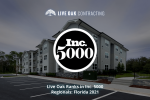Although it has been 18 months since the Tax Cuts and Jobs Act of 2017, the construction industry continues to familiarize itself with new programs created as a result of this bill. One of the most significant aspects of the bill was the “Investing in Opportunities Act” and the newly established Opportunity Zone Program where private investors are incentivized — via tax benefit on current investments and property bought and developed — to jumpstart growth in distressed areas.
The program was designed to create a long-term solution to the lack of growth and uneven economic recovery in the country’s troubled regions while minimizing cost and risk to developers. Over 8,700 Opportunity Zones, or roughly 12% of all census tracts in the US, have been certified in the United States and its territories.
How are Opportunity Zones Determined?
Up to 25 percent of a state’s low-income neighborhoods and up to 5 percent of its non-low income neighborhoods have been designated as Opportunity Zones because they met geographic and income requirements. Opportunity Zones have at least a 20% poverty rate, with most families falling below 80% of the average median income of the surrounding areas.
Each governor designated the number of Opportunity Zones and which neighborhoods within their state or territory qualify. Areas were designated as Opportunity Zones based on data from census tracts and will remain categorized as such for 10 years.
How do You Invest in Opportunity Zones
You may only receive the incentives on capital gains that have taken place within the last 6 months (which can be from the sale of a business, stocks, or any other capital gain. That gain must be placed into a Qualified Opportunity Fund, which can then place the qualifying funds into opportunity zones.
Benefits of Opportunity Zone Investment and Development
According to the Brookings Institute, 57% of all neighborhoods in America meet criteria to be considered an Opportunity Zone. The program is not only beneficial to the local communities that need revitalizing but also gives private investors the opportunity to initiate the redevelopment of these economically distressed areas with less restriction. There is no limit on the number of funds that can be created through pooling private investment capital. Furthermore, investors can exclude up to 10 percent of their original taxable gain after five years and up to 15 percent after seven years. At the end of 2026, investors will have to pay taxes on original taxable gains. The taxes due on the original taxable gains rolled into the opportunity zone will need to be paid. If your opportunity zone investment is held for a total of ten years or more, then upon the sale of the investment, the owner will have zero tax liabilities.
There are, however, regulations in place to ensure that development plans in Opportunity Zones will benefit the community. Multifamily apartments, mixed-use projects, and retail centers are all examples of qualifying developments. The creation of new jobs, in addition to other developments typically follow such a revitalization and are a key component of the program.
Limitations to the Opportunity Zone Program
Although the Opportunity Zones program offers many benefits, it does, however, have limitations. There is a strict timeframe in which developers must begin working on a project. Whether the developer is planning a new construction project or renovating an existing structure, construction of the project must be initiated within 30 months of receiving funding. This means the investor has to solidify a design, raise capital, and recruit a project team within the allotted amount of time.
Furthermore, in order to completely eliminate the capital gains on the opportunity zone investments, the fund must hold onto the investment for at least 10 years. This decade-long commitment leaves developers wary as their capital is tied into the project, leaving them unable to invest the funds into other ventures.
Opportunity Zones in Jacksonville
Live Oak Contracting is currently working with local development firm Chance Partners on an Opportunity Zone project located along Philips Highway in Jacksonville. The San Marco Promenade is the first new development that is revitalizing a struggling pocket within the area known as San Marco East. Once completed, residents will have access to new housing and amenities found in other thriving areas of the city.
As a full-service multifamily and commercial contractor, Live Oak Contracting works with developers and investors to identify the right opportunities that will maximize their portfolios. Our collaborative approach on each project — from preconstruction to completion — ensures the highest quality product is delivered on time and within budget. Learn more about our process, dedication to excellence, and how we can bring value to your next project by contacting us.




